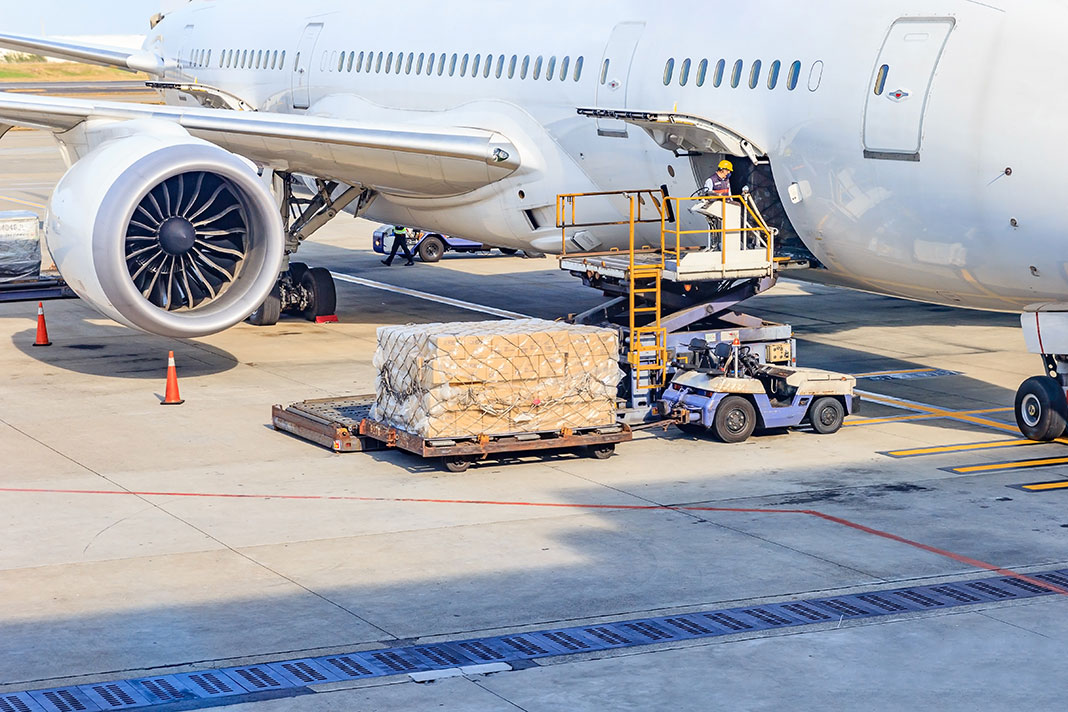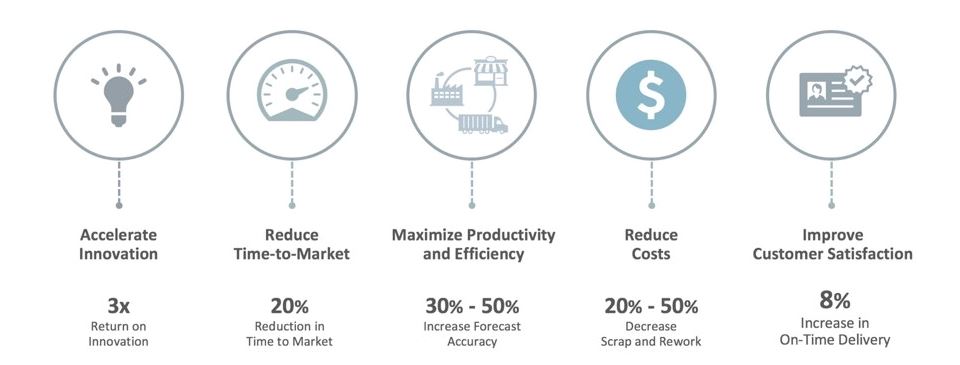Globally, the COVID-19 pandemic has resulted in an environment of uncertainty for businesses and industries of all calibers, and the freight forwarding and logistics industry isn’t any different. The latter had to face an avalanche of challenges: skyrocketing rates, the capacity crisis in supply chain networks, increased demand for consumer goods, port closures, container shortages, illnesses among operators, and weather difficulties are just a few to name.
The only way to survive these challenges and difficult circumstances were to practice agility and adaptability, which freight forwarders have accomplished. Increasing investment in technology not only enhances efficiency but also improves operations and helps create new solutions.
This article will address how the freight forwarding industry has used digitalization to strengthen the supply chain and the steps forwarders are taking to increase the industry’s resilience in the competitive market.
Strengthening Supply Chain and Logistics with Digitization
The four main methods of transporting shipments in logistics are road (truck), maritime (ship), rail (train), and air (plane). It is often difficult for companies to choose the correct mode of transportation for best results, especially those who are new to domestic or global shipping. But knowing the benefits and differences of each mode of transportation can help identify the best option.
Modernizing Supply Chain Management
From conventional assembly lines to advanced robotic applications, supply chain management is continuously evolving. This was largely driven by increasing consumer demands and the intricacy of the supply chain process, such as transporting huge quantities of goods to far-off locations as per the globalization of trade.
The latest developments in supply chain and logistics are based on technology-driven, smart management for minimizing operating costs and increasing efficiency. These advancements are important to embrace for sustaining the quality of raw materials, keeping up the efficiency of the manufacturing process, and improving transporting, tracking, and storing finished goods.
Industries employing these latest supply chain practices can cater to consumer needs more quickly and promptly. This helps strengthen customer relationships and establish loyalty, resulting in increased revenue and gaining new customers.
Supply Chain Digitization
Digitization involves using advanced technological solutions along with physical and digital resources to reshape logistics practices. This helps freight forwarders adapt to the extremely competitive and fast-paced business environment.
Digitization not only enhances the speed and resilience of supply chain operations it also leads to increased customer receptiveness and helps generate more revenue. However, to reap the complete advantages of digitalization, logistic industries must essentially redevelop their entire supply chain policy.
This is where a concept known as the Internet of Things (IoT) holds prominence. The latter is a system consisting of interconnected computing devices that facilitate data transfer without human involvement. For example, IoT can help logistic industries manage stocks, monitor inventory, adjust fleet routes, and decrease dead mileage.
Artificial Intelligence and Supply Chain Management
There are many benefits of advanced AI applications in supply chain management, especially within the warehousing segment. Some of these include ‘gesture recognition solutions that can replace the use of keyboards and humans in procurement processes and the use of self-driving cars (autonomous vehicles) that can navigate cargo without human involvement.
Robotics is also extensively implemented within the supply chain, where the latest robots are cheaper, simpler to program, and offer more flexibility. As a result, they play a major role in assisting workers with tedious and physically difficult tasks.
Role of E-Commerce for Supply Chain Management
US Census shows that e-commerce sales (as a constituent of all retail sales), increased by 13 percent between 2018 and 2019. Since e-commerce and supply chain management are interrelated, companies must update their existing SCM systems or risk being lost in the storm of increasingly competent competitors. Even though only 25 to 35 percent of US distributors own an e-commerce component, it is anticipated to become one of the fastest-growing areas in the e-commerce business in coming years.
There are mainly two roles of e-commerce in supply chain management. First, retailers can use e-commerce to sell their goods directly to clients via personal websites or services such as e-Bay or Amazon. Retailers can purchase raw materials and products from manufacturers, distributors, and wholesale dealers using e-commerce systems. Similar to retailers, suppliers can either make sales directly via personal websites or via services.
Using Drop Shipping
In most cases, retailers adopting e-commerce to sell and purchase products can completely exclude their supply chain management by drop-shipping. When a client orders an item through the retailer’s website, the retailer spontaneously orders the same item from the distributor or manufacturer. The latter then ships the item directly to the client. The sole role of the retailer in this transaction is collecting money from the client and paying the supplier.
Moreover, businesses using e-commerce have the benefit of ordering products at any time. And with the help of an Enterprise Resource Planning (ERP) software system, products can even be ordered automatically if the system detects that stocks are running low.
Process Plan for Freight Forwarding and Logistics
Due to the increased complexity within shipping schedules, a growing number of businesses are relying on the freight forwarding sector to meet their needs. The latter can positively influence existing business models via their expertise and associations within the shipping industry.
An effective tactic is to pool different freight forwarders into a dynamic network that can quickly respond to rapid changes within the market. Here are five important steps to consider when developing a process plan for freight forwarding and logistics.
1. Locate a Reliable Freight Forwarder
Look for a team with a good reputation and provides various services with exceptional customer care. Finally, and most importantly, the freight forwarder must understand your requirements, goals, objectives, and budget.
After selecting a provider, ask for a quotation to assess whether the deal is fair for your business. Study the quotation carefully and ask challenging questions about additional services, including warehousing, crating, etc.
2. Initiate Process of Transportation
Some freight might need you to become both an importer and exporter at specific points during the supply chain. So the next step is to bring your merchandise to an in-house or hired processing warehouse. Certain freight forwarders provide a custom crating service. However, your nearness to the warehouse will define the time spent transporting the cargo.
3. Clear Merchandise from Customs and Excise Procedures
Next, the cargo needs to be cleared for import/export. Ideally, freight forwarders can handle the entire process without your involvement. They will inspect the merchandise and make sure the inventory lists are exact, there is no damage, and they might also handle customs clearance for you. Prohibited items will be excluded from cargo before reaching port grounds. Good freight forwarders can manage all the required processes as per the rules of the relevant jurisdiction.
4. Arrival and Handling
Once cargo reaches the destination port, certain procedures are initiated. For example, pending documents are completed, carrier bills are settled, and arrangements to handle any delays are made. Your freight forwarder will be involved in all these processes.
5. Form the Inland Transportation
The last step is organizing inland transportation to supply the cargo to the owners. Freight forwarders must provide safe and spacious vehicles for this purpose. You must confirm with your freight forwarder that they will offer this service. If they don’t, you will need to make alternative arrangements to avoid cargo being held up at the port.
Tips to Improve the Freight Forwarding Process
Here are some tips and tricks that can help improve and streamline the freight forwarding process and help handle any challenges and risks.
Have Clearly Defined Goals, Objectives, and Expectations
A well-structured plan helps optimize processes at each stage and makes it easy to work towards achieving your goals. With undefined objectives, you’ll waste important time figuring out daily routines and processes and will not be sure about your effective costs and how you can increase customer satisfaction.
Establish Roles and Responsibilities
This will help eliminate uncertainty and increase transparency in your business. Moreover, it helps save time and makes processes quicker. Defined roles and responsibilities also reduce the chances of crashes and failures, increase service levels, and minimize operational costs.
Automate Activities
Using logistics software, you can drastically increase efficiency in coordinating processes and information. Automated functions can facilitate running operations more systematically, exclude paperwork, reduce operational costs, and help handle shipments more precisely and efficiently.
Automation also helps streamline the freight forwarding process, reducing staffing efforts, maximizing productivity, increasing profitability, and enhancing customer satisfaction.
Apply Risk Management System
As has been seen during the pandemic, the logistics market is extremely volatile and unstable. This is why it is crucial for freight forwarders to implement a robust risk management system to avoid any sudden breakdowns.
By assessing risk exposure, necessary security arrangements can be made to run the entire freight forwarding process smoothly.
Increase Your Storage Space
With simple evaluations and implementations of proper warehouse procedures, you can efficiently move, store, and ship products. Analyzing order patterns also makes sure that cargo is delivered quickly and your storage space is used effectively.
Analyze the Entire Transportation Process
And last but not least, overview every factor involved in the transportation of goods to streamline costs, taxes, fees, and supplies values. This helps reduce overall costs and optimizes all processes each time you design a new route or the load/delivery of shipments.
Conclusion
The logistics and freight forwarding industry are continuously expanding, due to which companies are always on the lookout for novel ways to rise above the competition. In such circumstances, continuous improvement, adoption of the latest technology, and focusing on a flexible and adaptable process plan are essential to facilitate growth and optimize the entire freight forwarding process.
By simply making small adjustments and implementing tools such as digitization and automation, freight forwarders can improve their processes and ensure they receive maximum value for their investment.
CATEGORY
1 on 1 Dedicated Managers
for Personalized Solutions as your very own dedicated in-house team
CUSTOMER CENTRIC
success for our customers at the heart of every action
Transparent & Trusted
clear cut processes trusted by 2000+ global sellers & brands

Amazon Seller Solutions Providers
servicing Amazon’s Global Sellers across Global Marketplaces







